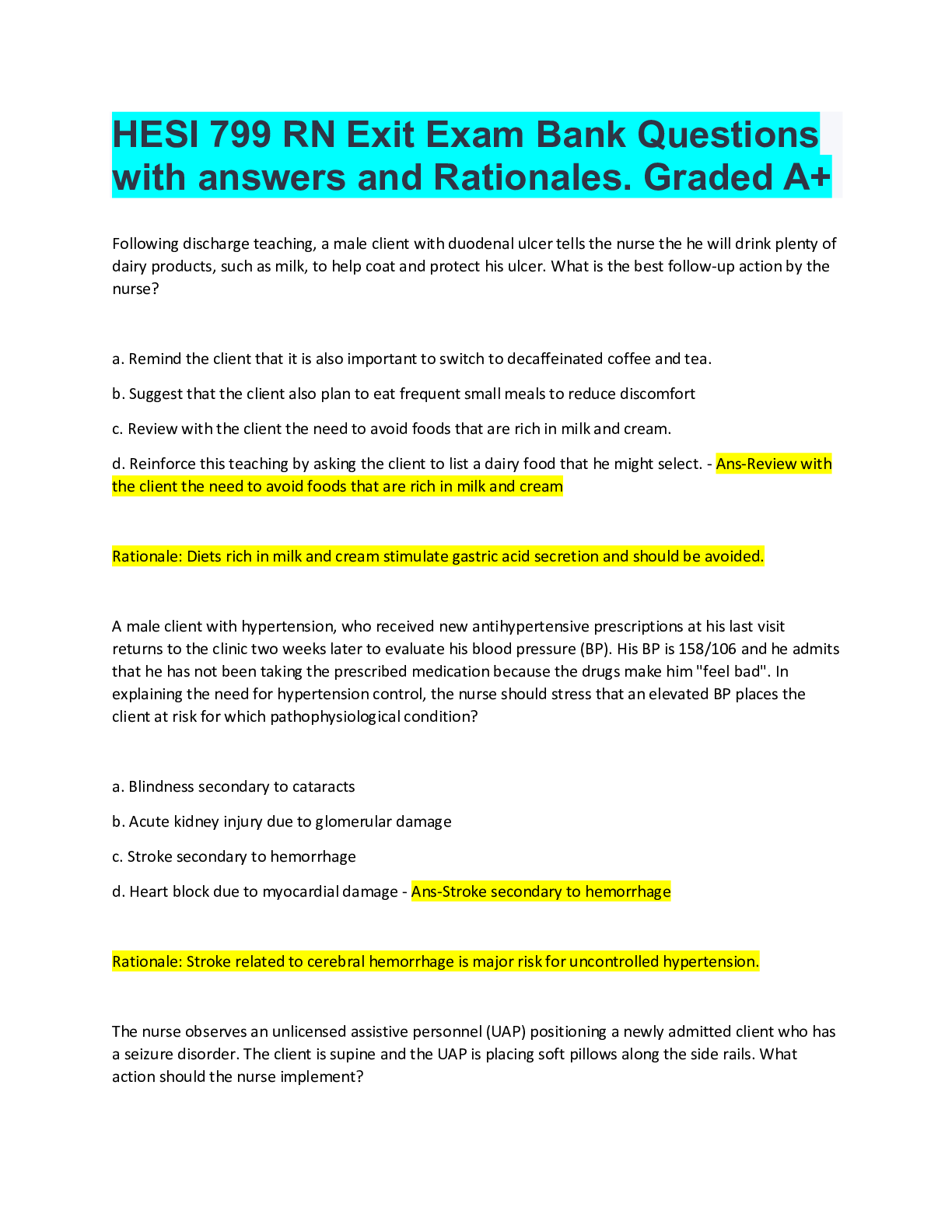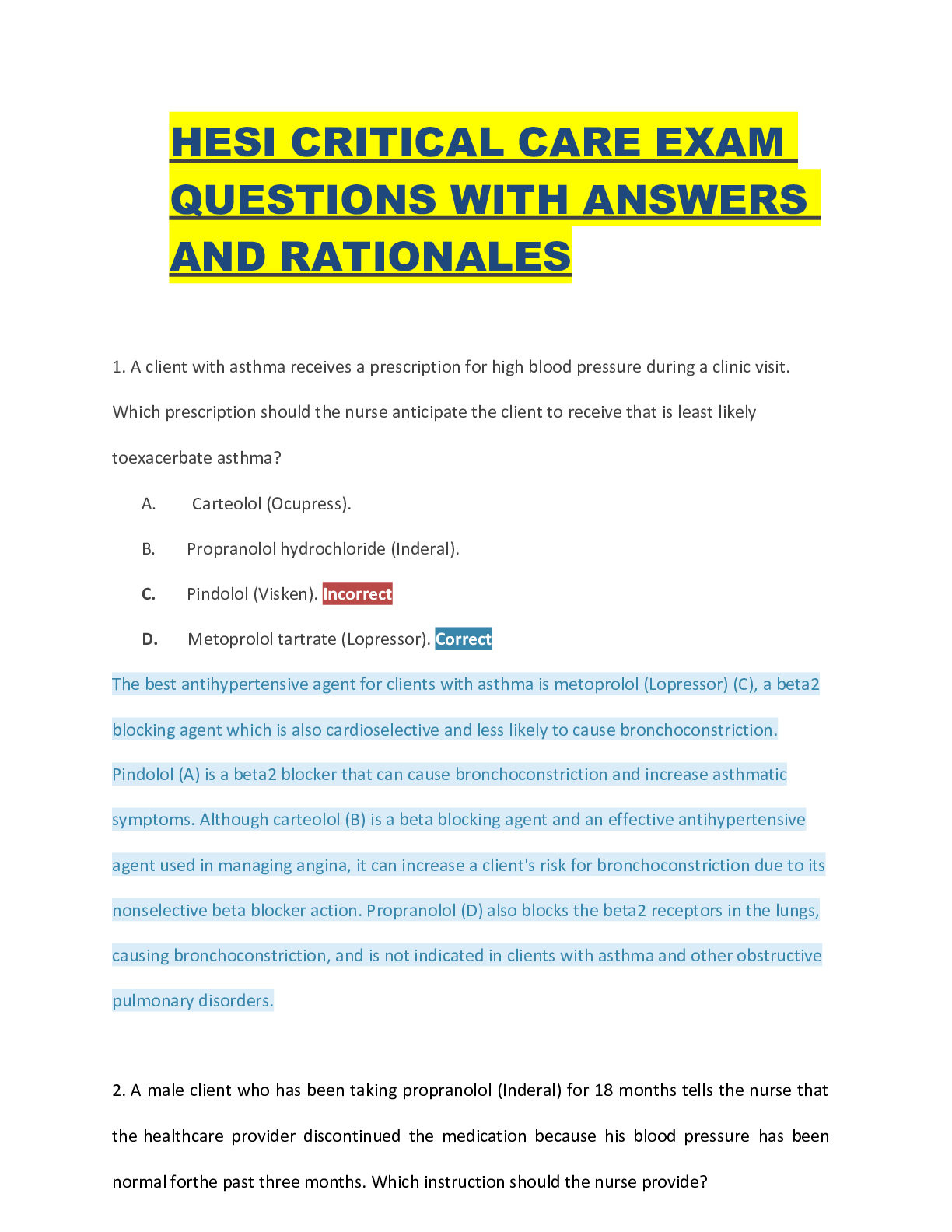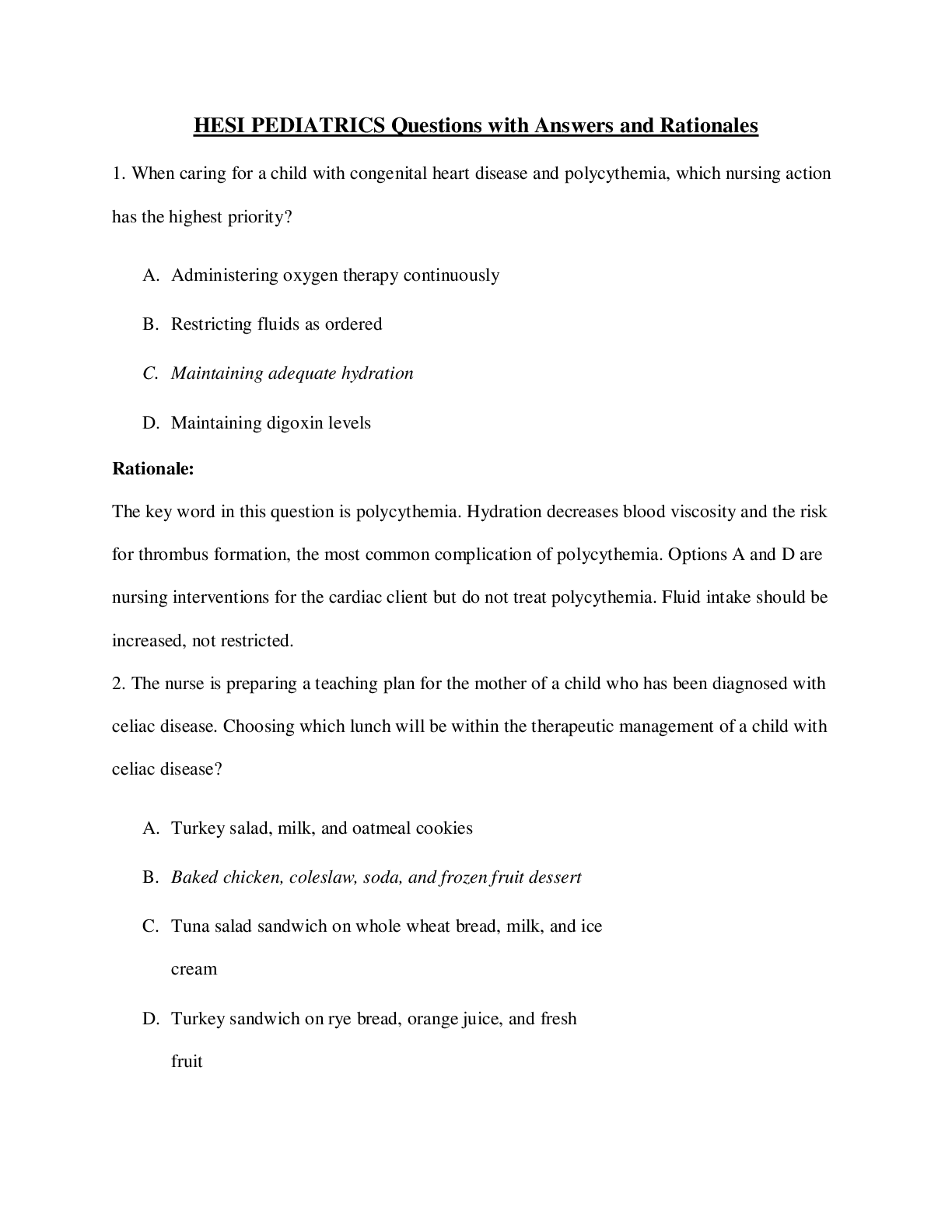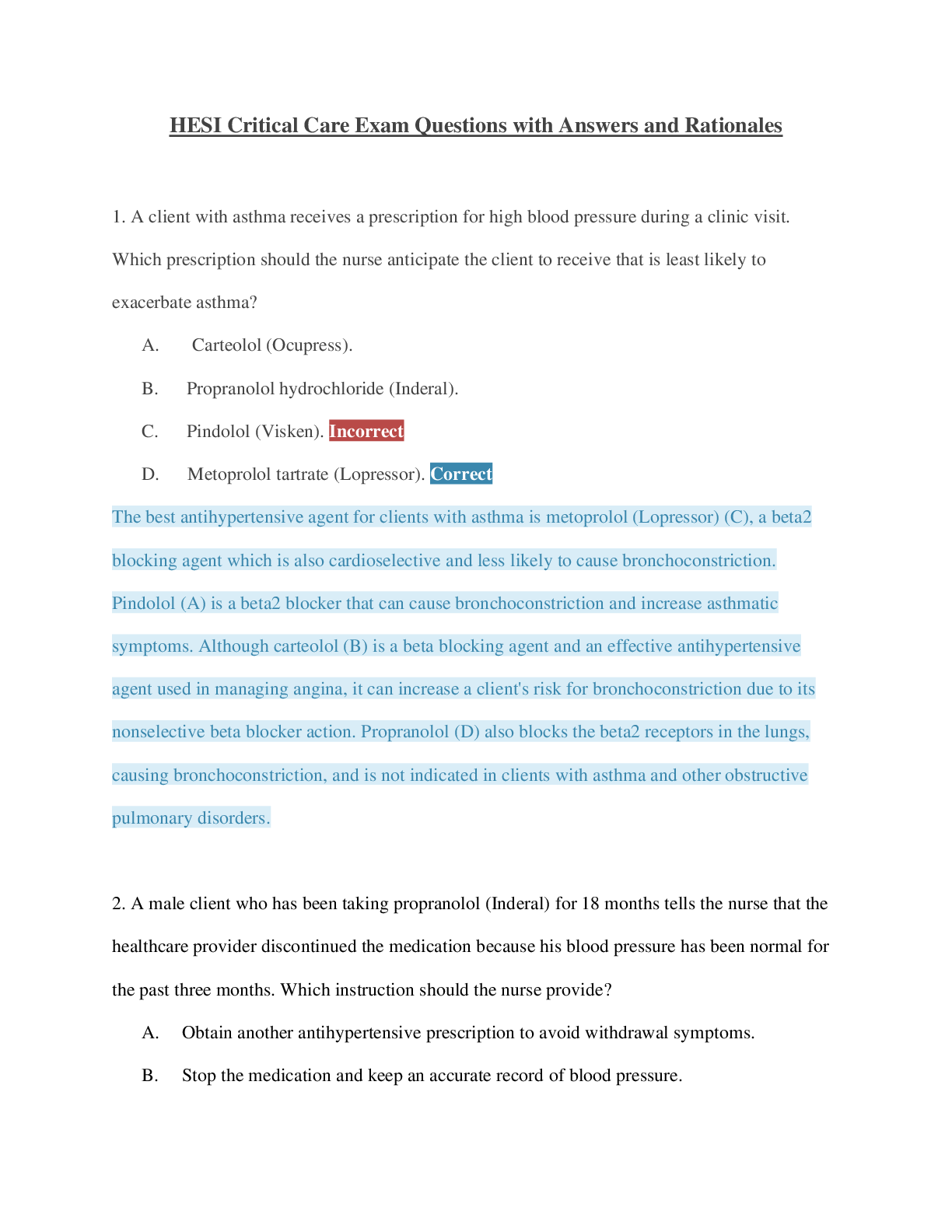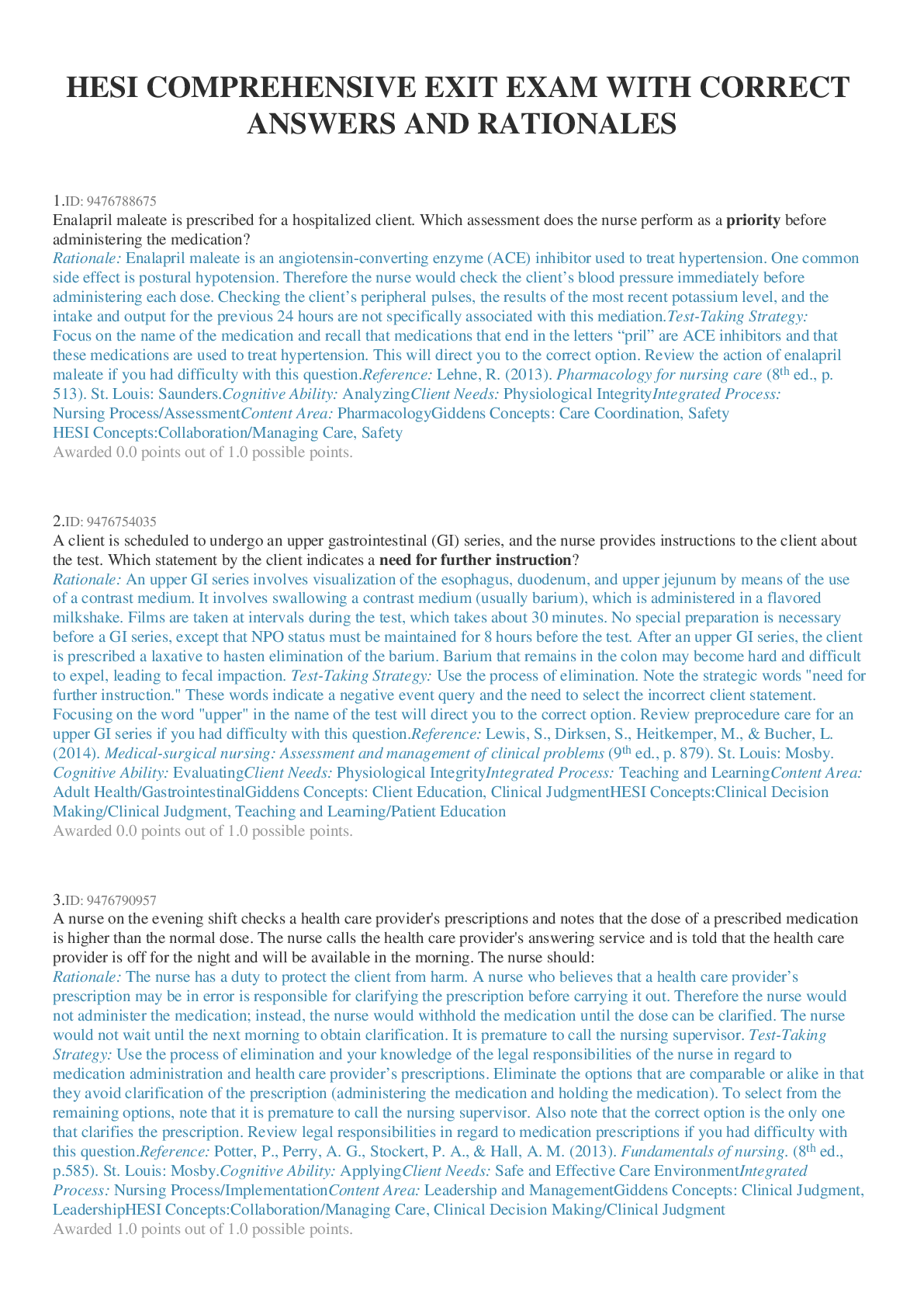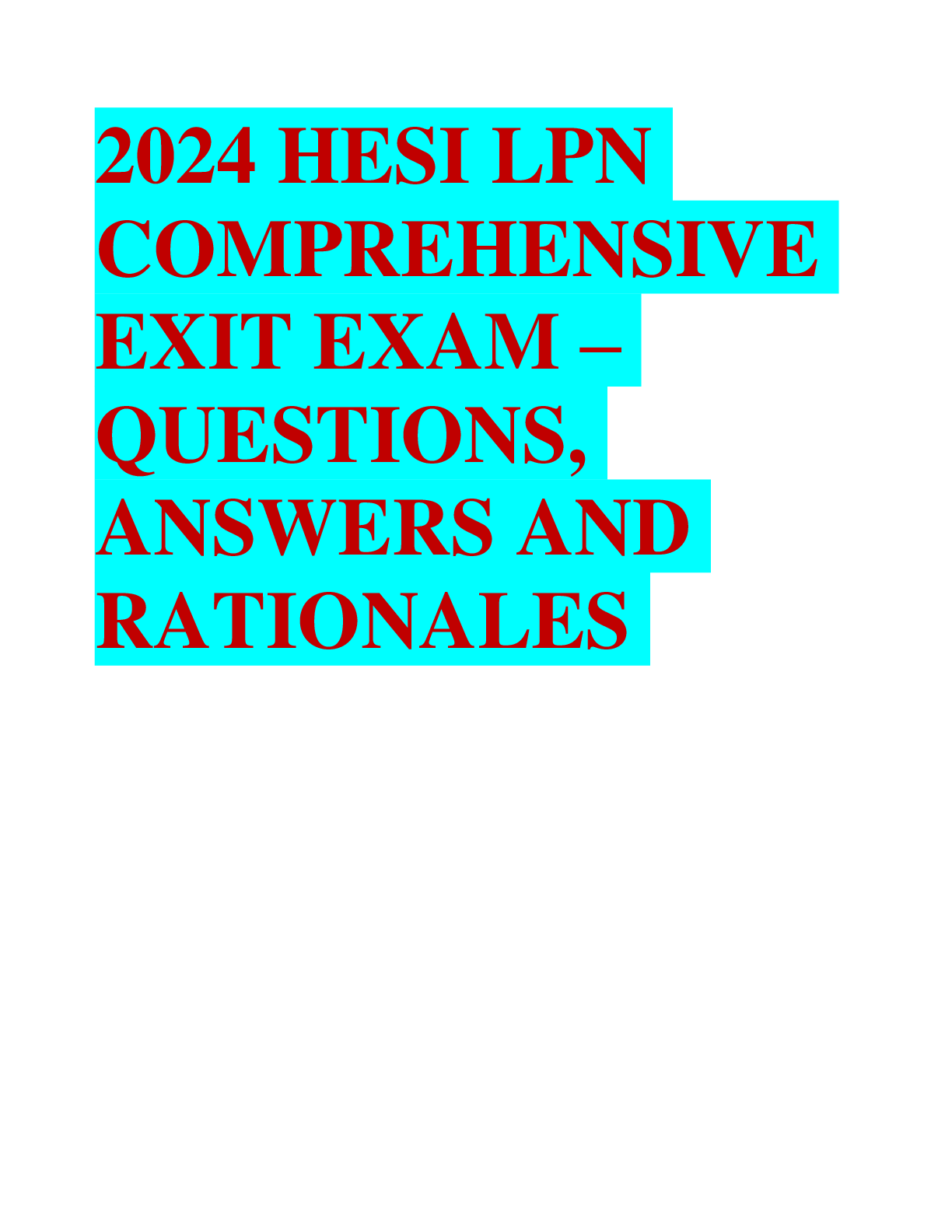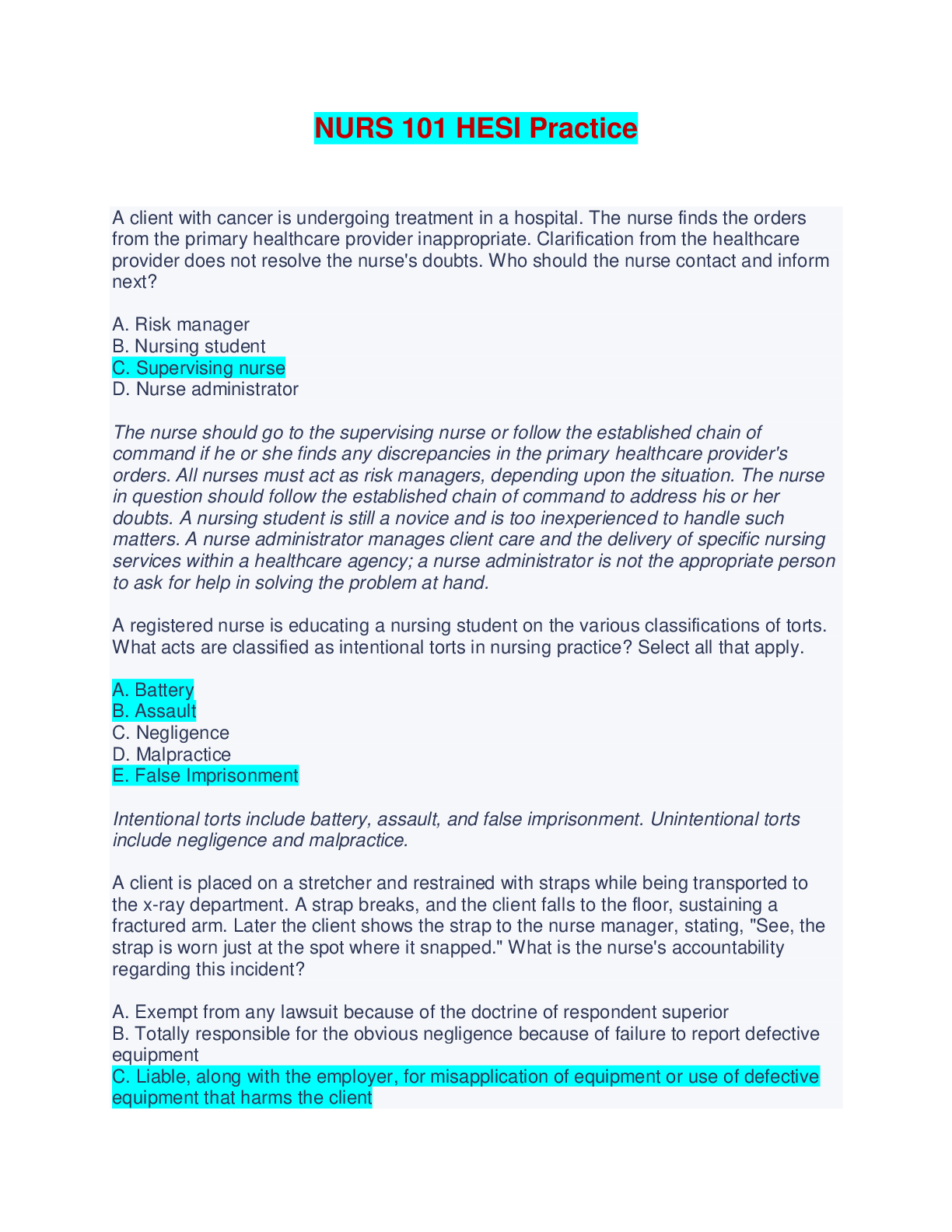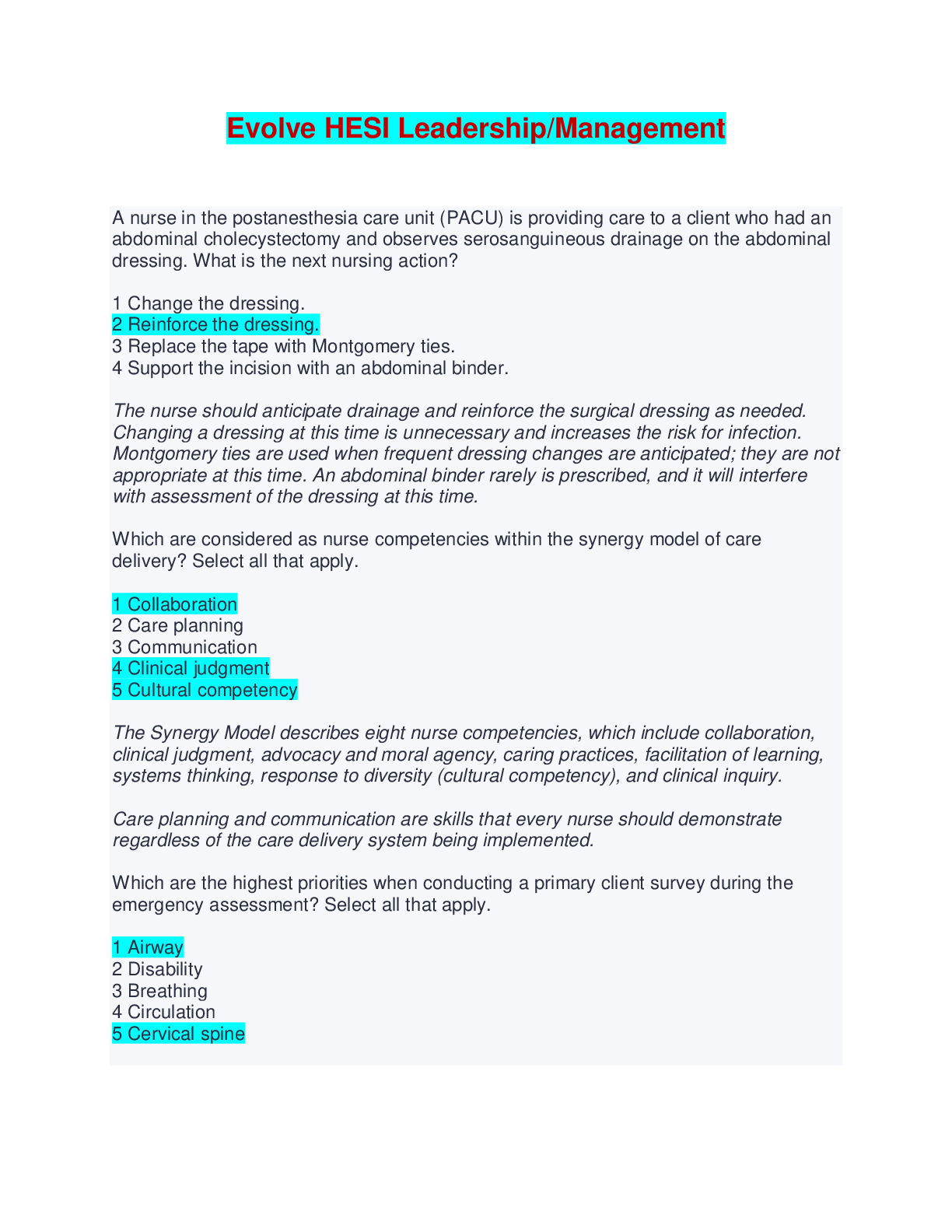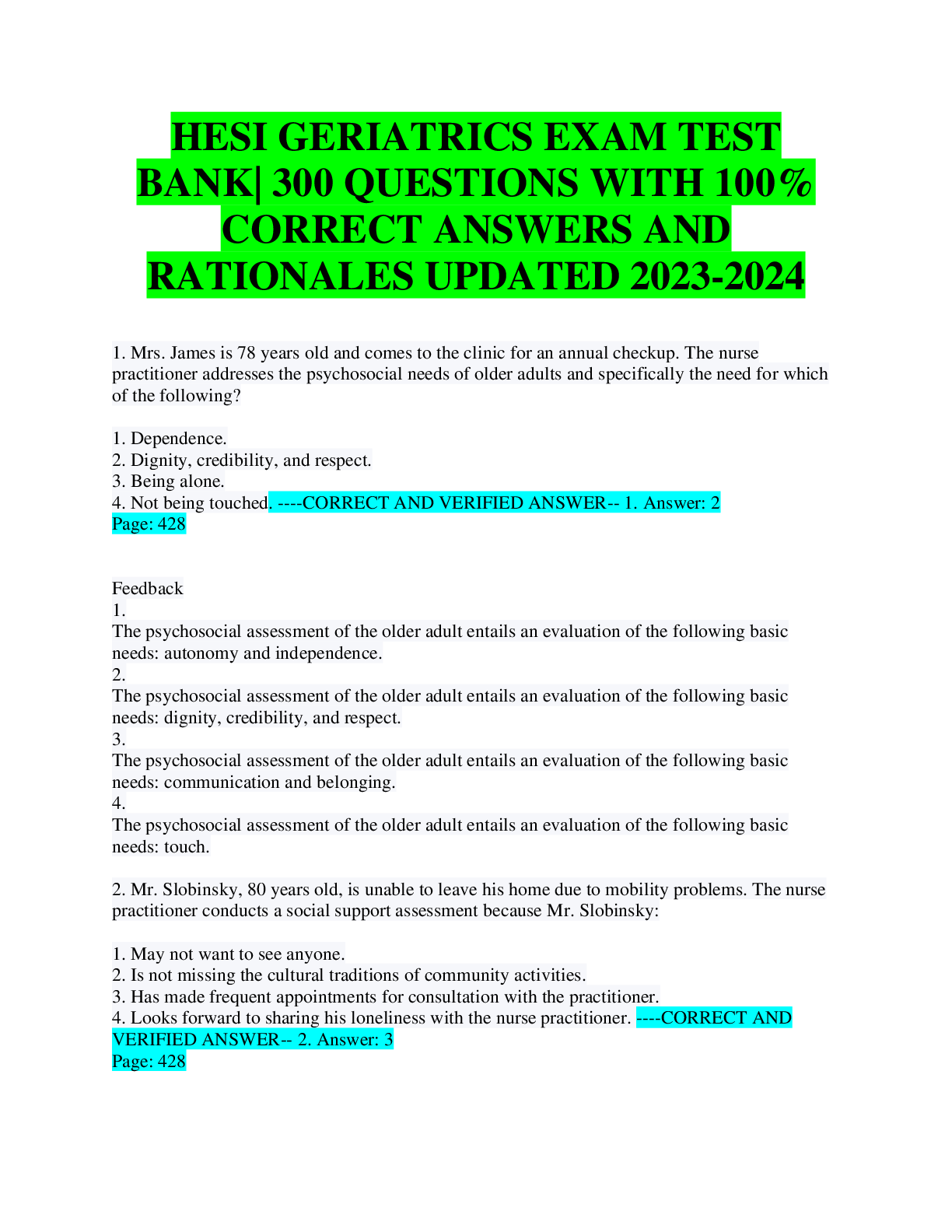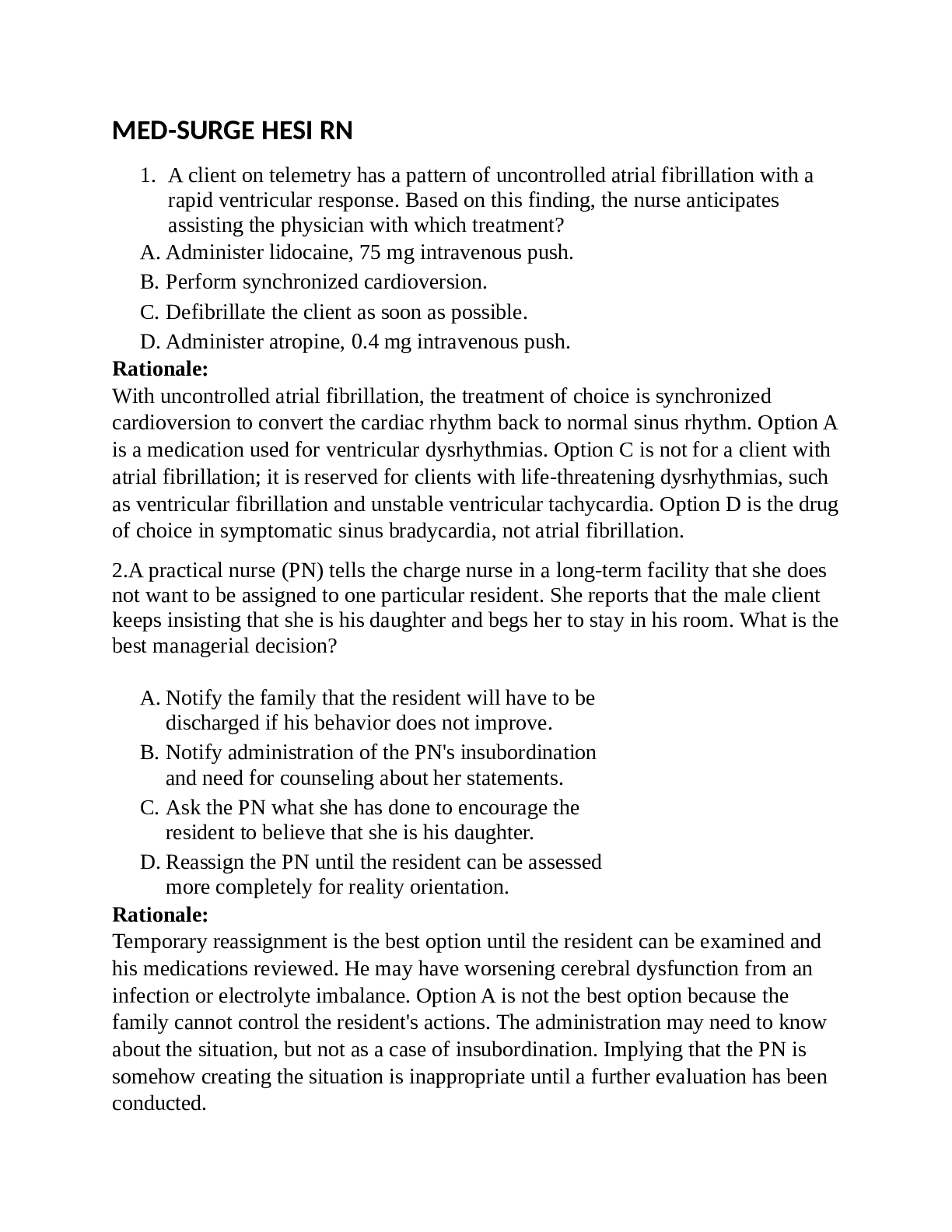HESI Focus on Adult Health Exam - Questions, Answers and Rationales
Document Content and Description Below
HESI Focus on Adult Health Exam - Questions, Answers and Rationales A client sustains a fractured femur and pelvic fractures in a motor vehicle crash. For which signs and symptoms, indicative of hyp... ovolemic shock, does the nurse monitor the client closely? Select all that apply. Oliguria Tachycardia Hypotension Rationale: Clients who sustain fractures of the femur, pelvis, thorax, and spine are at risk for hypovolemic shock. Bone fragments can damage blood vessels, leading to hemorrhage into the abdominal cavity and the thigh. This can occur with closed as well as open fractures. Signs of hypovolemic shock include tachycardia, hypotension, and diminished urine output. Fever and bradypnea are not associated with hypovolemic shock. Benztropine mesylate is prescribed for a client with Parkinson's disease. For which gastrointestinal (GI) side effects of the medication does the nurse monitor the client? Select all that apply. Dry mouth Constipation Rationale: Common GI side effects of benztropine therapy include constipation and dry mouth. Hypoactive, rather than hyperactive, bowel sounds might occur. Increased appetite and mucositis are not associated with this medication. Cyclobenzaprine has been prescribed for a hospitalized client to treat painful muscle spasms caused by a damaged intervertebral disk. The nurse would withhold the medication and question the prescription if the client had a concurrent prescription for: Tranylcypromine Rationale: The client should not receive cyclobenzaprine if he has taken a monoamine oxidase (MAO) inhibitor such as tranylcypromine or phenelzinewithin the preceding 14 days. The combination of the two drugs could produce hypertensive crisis or seizures. The medications listed in the other options are not contraindications to the use of cyclobenzaprine. A client is undergoing anticonvulsant therapy with phenytoin. Which laboratory parameter does the nurse monitor most closely in this client? Complete blood count (CBC) Rationale: Phenytoin is an anticonvulsant. The nurse closely monitors the CBC of a client taking the drug because hematological side effects of this therapy include blood dyscrasias such as agranulocytosis, leukopenia, and thrombocytopenia. Liver function tests, a CBC, and a platelet count should be performed before therapy is begun and periodically during therapy. The potassium level, creatinine, and BUN are not affected by the use of phenytoin. A nurse is caring for a 25-year-old married client who will undergo bilateral orchidectomy for testicular cancer. On which psychosocial concern directly related to the surgery does the nurse place priority in formulating the postoperative plan of care for the client? Ineffective role performance Rationale: In a client who is to undergo bilateral orchidectomy, the nurse would assign priority to loss of reproductive ability as a psychological concern. The radical effects of this surgery in this area make it likely that the client will have some difficulty adjusting to this consequence of the surgery. The other options are not related directly to the surgery but might be cause for concern if the client experiences difficulty adjusting to the effects of the surgery. A client with AIDS is admitted to the hospital with a diagnosis of histoplasmosis, and the nurse monitors the client for signs of progression of the disease. Which finding indicates progression of histoplasmosis? Enlargement of the lymph nodes Rationale: Histoplasmosis usually starts as a respiratory infection in the client with AIDS. It then becomes disseminated, giving rise to enlargement of the lymph nodes, spleen, and liver. The nurse will also note dyspnea, fever, cough, and weight loss. Complaints of nuchal rigidity, headache, and blurred vision are unrelated to the findings noted in histoplasmosis but may be noted in cryptococcosis, a severe debilitating meningitis (and, occasionally, a disseminated disease) in AIDS. A nurse is evaluating goal achievement for a client in skeletal traction. Which finding would indicate to the nurse that the goals require revision? The client has a bowel movement every 5 days. Rationale: Expected outcomes for the client in skeletal traction include clear lung sounds, intact skin, a bowel movement every other to every third day, and the absence of thrombophlebitis, a disorder marked by calf or groin tenderness, unilateral swelling of the affected extremity, and pain. The client should also be performing active range of motion of uninvolved joints. The result of two enzyme-linked immunosorbent assays (ELISA) performed to detect HIV is positive. Which diagnostic test does the nurse anticipate will be prescribed next? Western blot Rationale: If the results of two ELISA tests are positive, the Western blot is performed to confirm the findings. If the Western blot result is positive, the client is considered positive for HIV and therefore infected with the HIV virus. The CD4+ T-count, which identifies the T-helper lymphocyte count, is performed to determine progression and treatment. Bone marrow biopsy is not a used to diagnose HIV infection. A nurse is providing dietary instructions to the spouse of a client with newly diagnosed AIDS who is being discharged from the hospital. The nurse instructs the spouse to: Serve foods at room temperature Rationale: The AIDS client may experience problems with nutrition as a result of the side effects of medications, anorexia, nausea and vomiting, altered taste, impaired swallowing and chewing, diarrhea, fatigue, depression, or impaired cognition. Foods are best tolerated either cold or at room temperature. Spicy foods may be irritating and can aggravate nausea. Peanut butter, a sticky food, should be avoided in the client having difficulty swallowing. Milk and milk products can exacerbate diarrhea. A nurse is reviewing the laboratory results of a client with cytomegalovirus retinitis who is receiving foscarnet sodium. Which laboratory test result that will identify a toxic effect of the medication, does the nurse check? Serum creatinine Rationale: Foscarnet sodium is an antiviral medication. Renal impairment is a major risk with the use of this medication. The serum creatinine level is checked before therapy, two or three times per week during induction therapy, and at least weekly during maintenance therapy. This medication may also cause decreases in the levels of calcium, magnesium, phosphorus, and potassium in the bloodstream. Therefore these parameters are measured with the same frequency. Sedimentation rate, liver function studies, and CD4+ T-cell count are not used to detect toxic effects of this medication. Radiation therapy is prescribed for a client with a brain tumor. Which side effects would the nurse expect the client to experience? Select all that apply. Alopecia Dizziness Rationale: Because radiation is a local treatment, most side effects are site specific, depending on the organs and tissues that are within or close to the treatment field. The client undergoing irradiation of the brain will most likely experience such early side effects as earache, headache, dizziness, hair loss, and erythema. Cough, dysphagia, and hoarseness occur with radiation to the lung, mediastinum, or esophagus. A nurse preparing an intravenous (IV) infusion for a client with leukemia is adding a chemotherapeutic agent to the IV solution. Which safety measure does the nurse implement while preparing this infusion? Wearing gloves and a gown and preparing the medication in a biological safety cabinet [Show More]
Last updated: 3 months ago
Preview 1 out of 28 pages
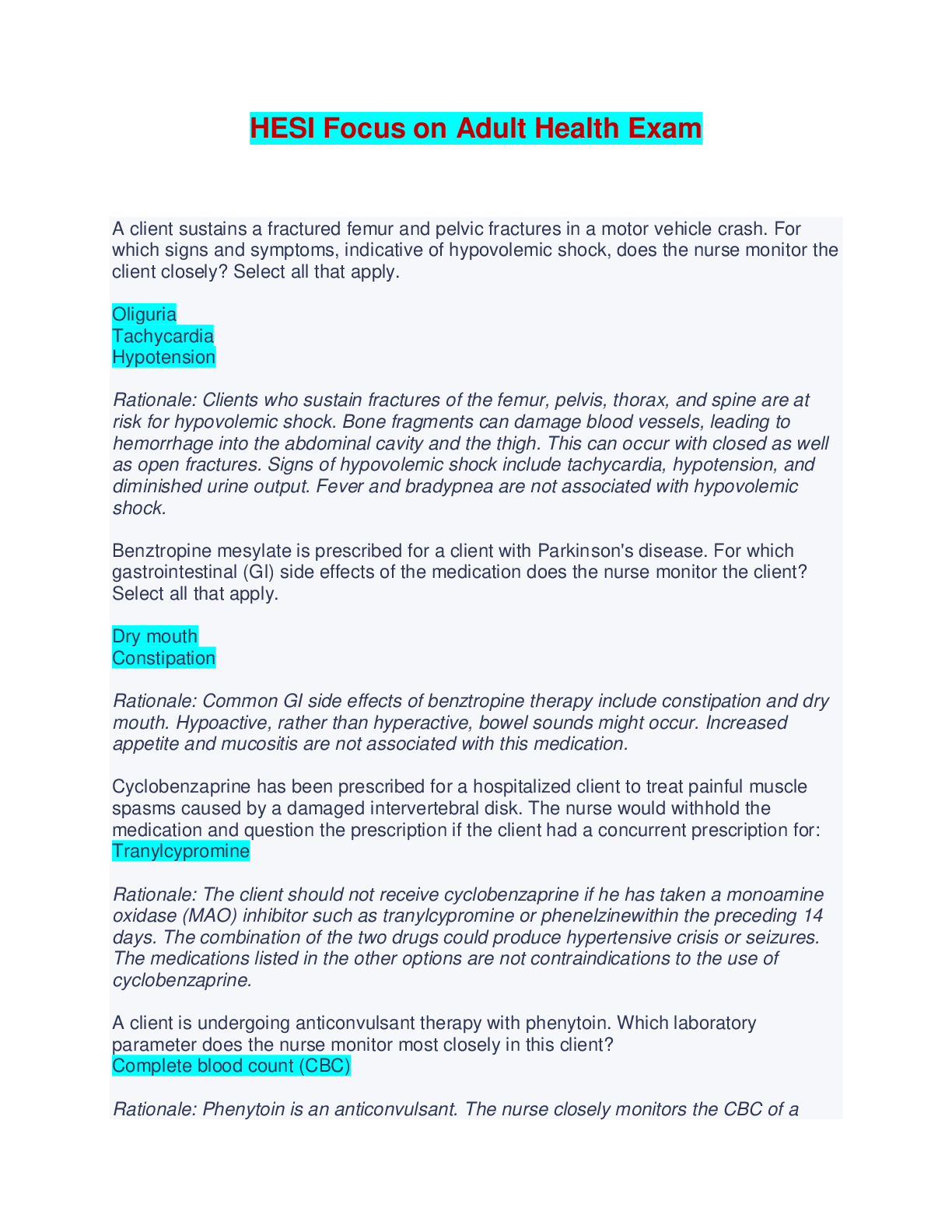
Reviews( 0 )
Document information
Connected school, study & course
About the document
Uploaded On
Jan 18, 2024
Number of pages
28
Written in
Additional information
This document has been written for:
Uploaded
Jan 18, 2024
Downloads
0
Views
22


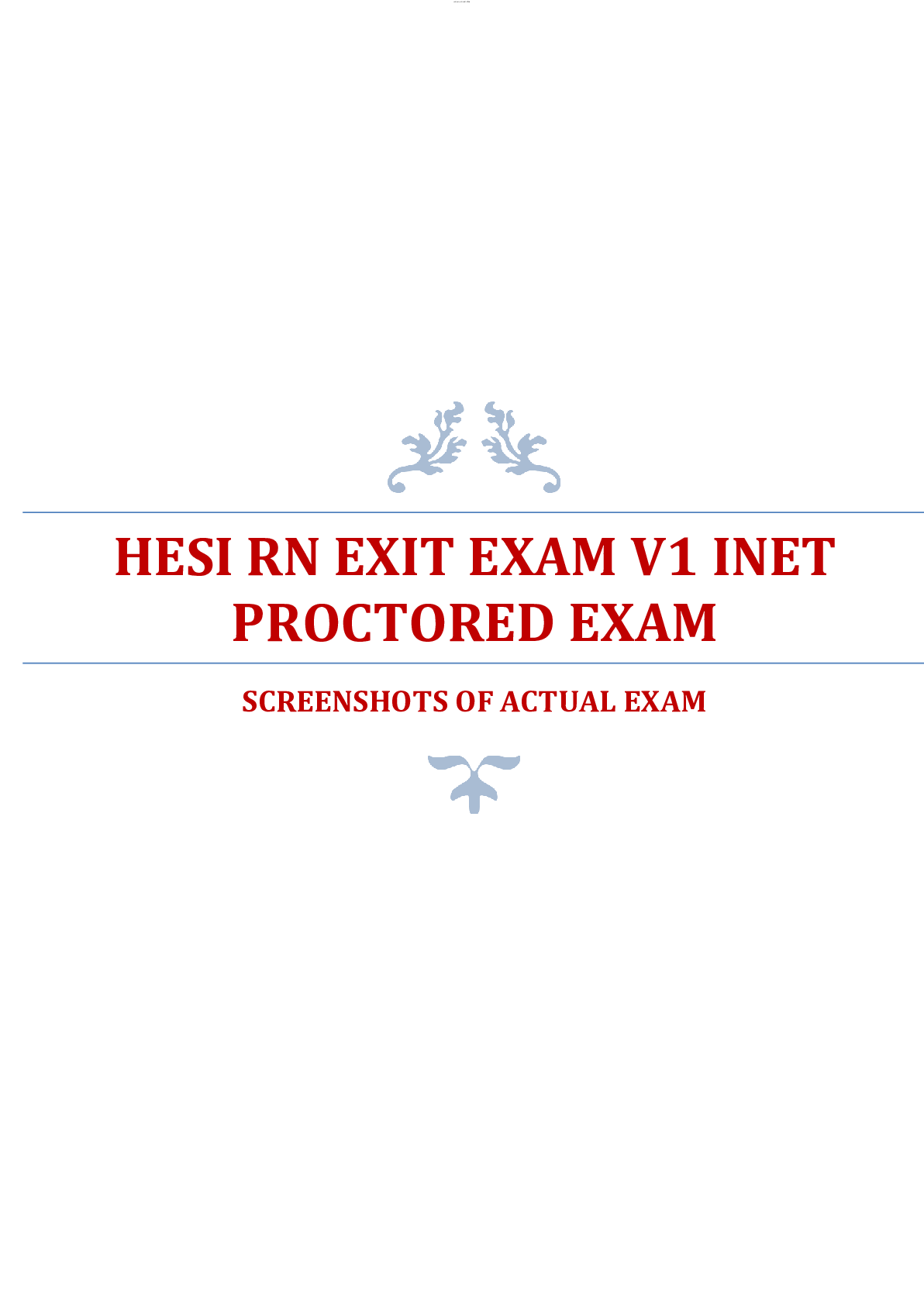
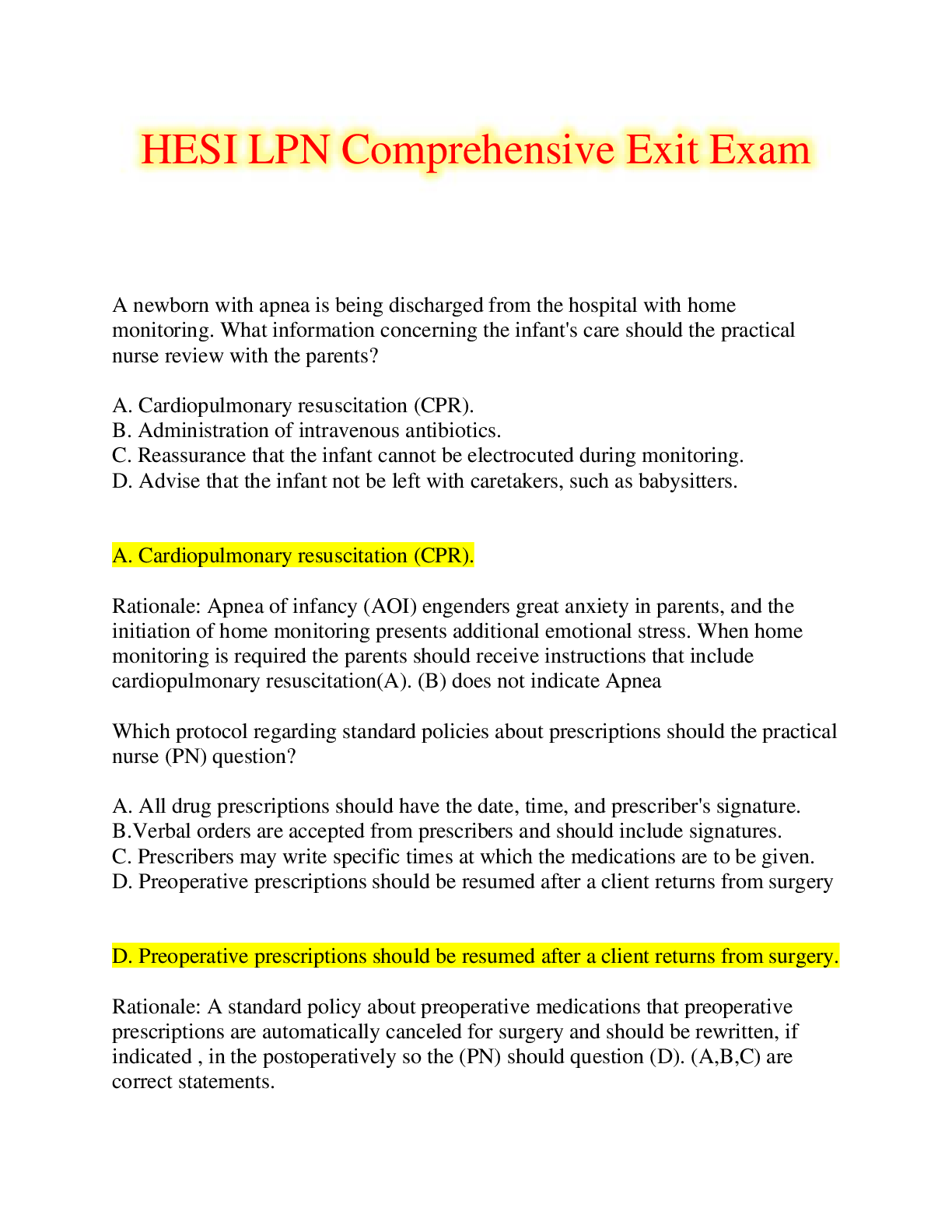
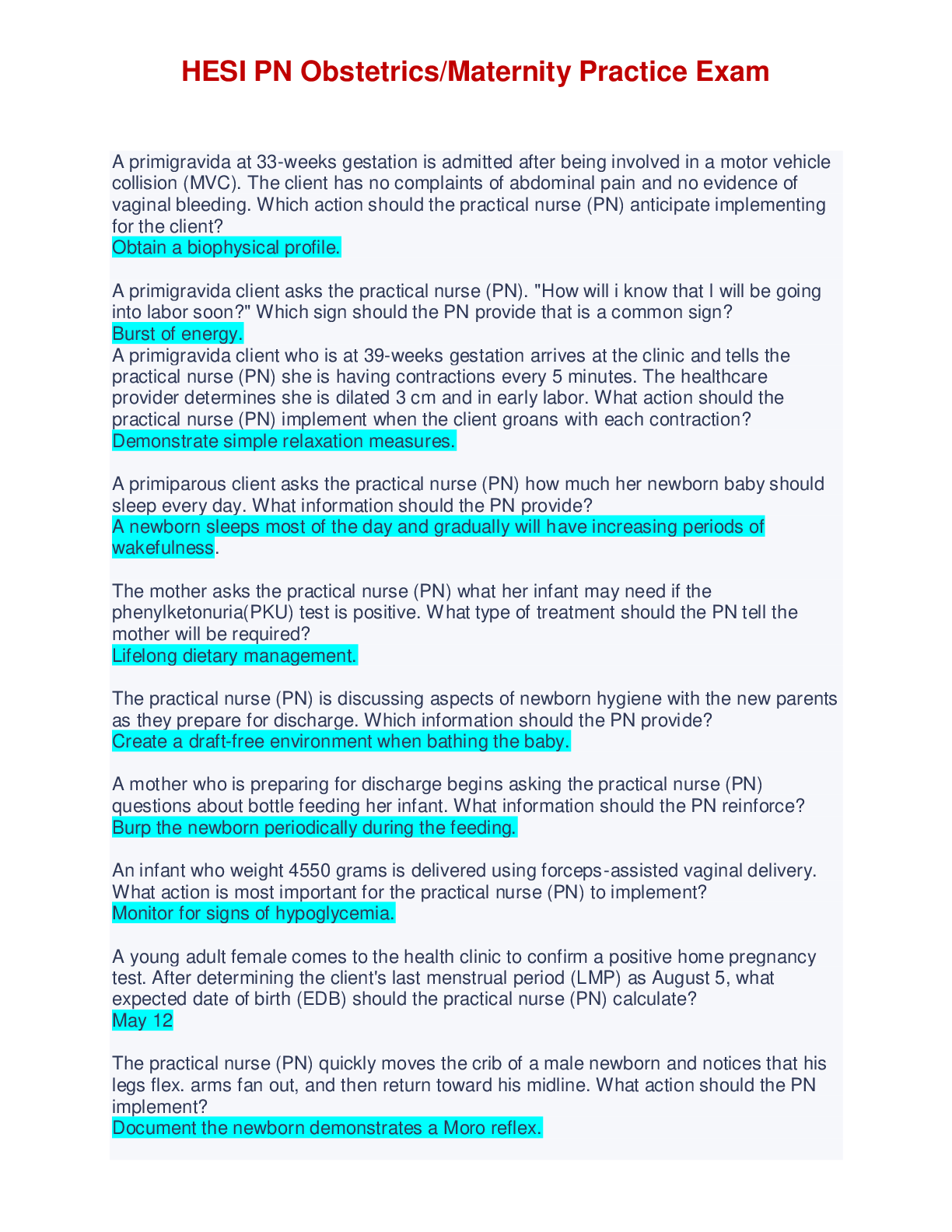
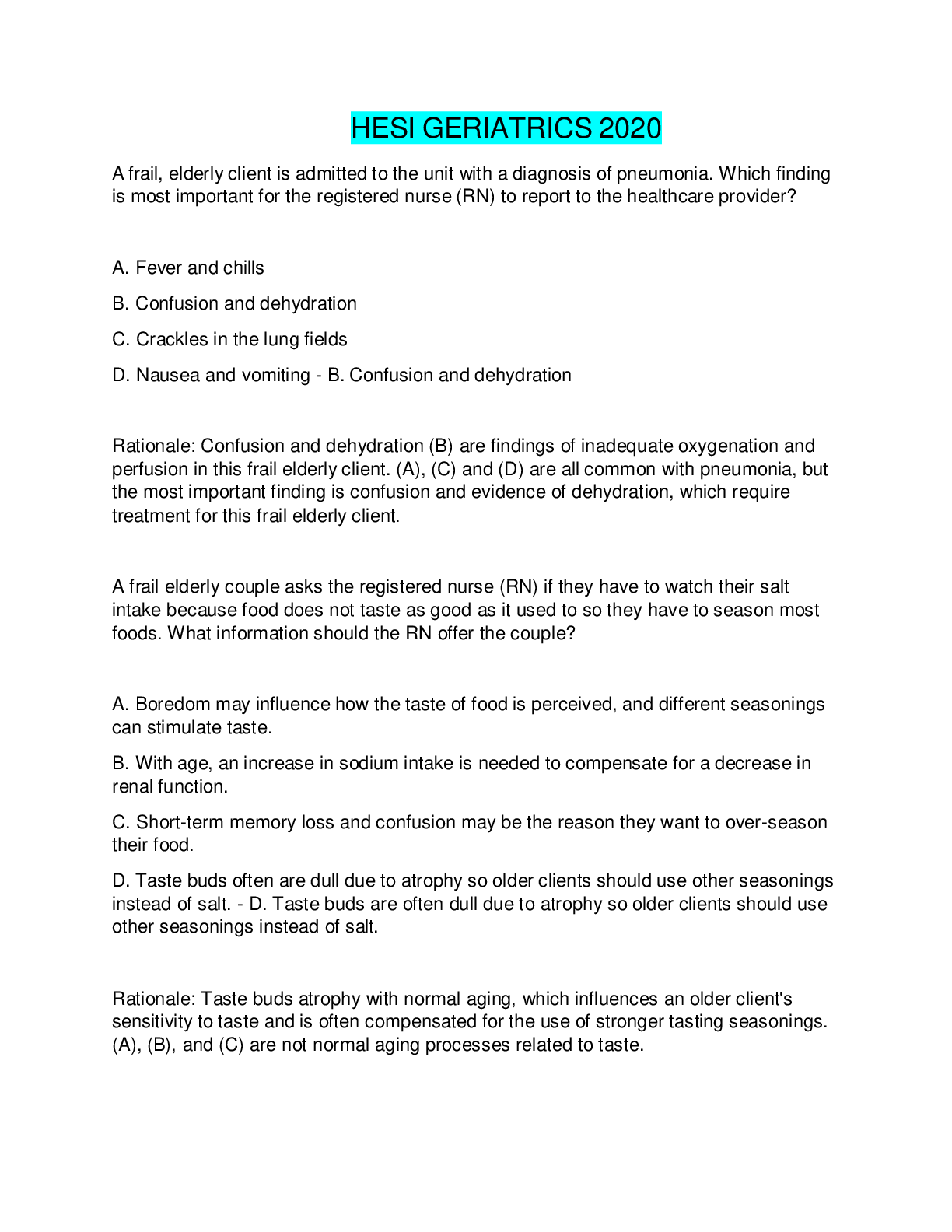

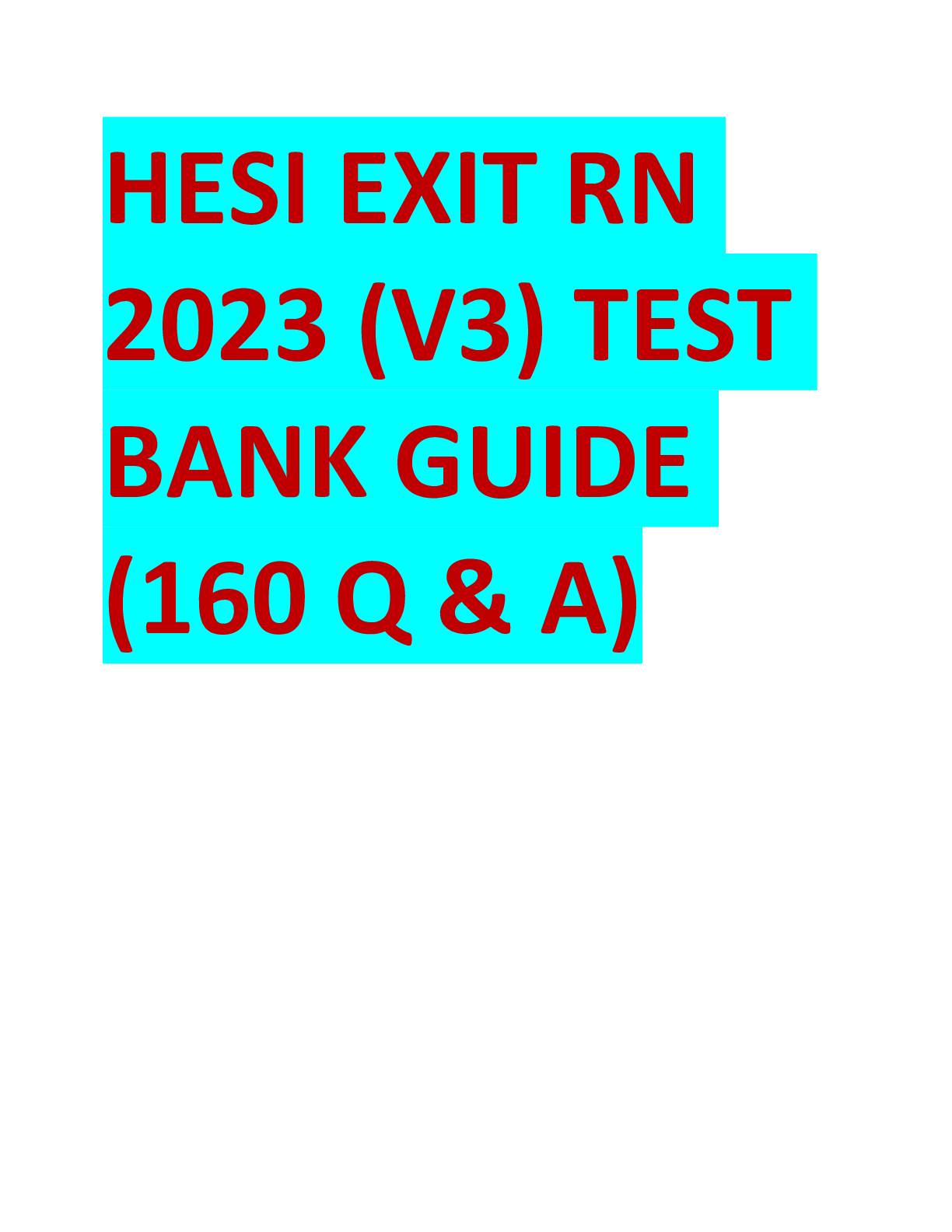


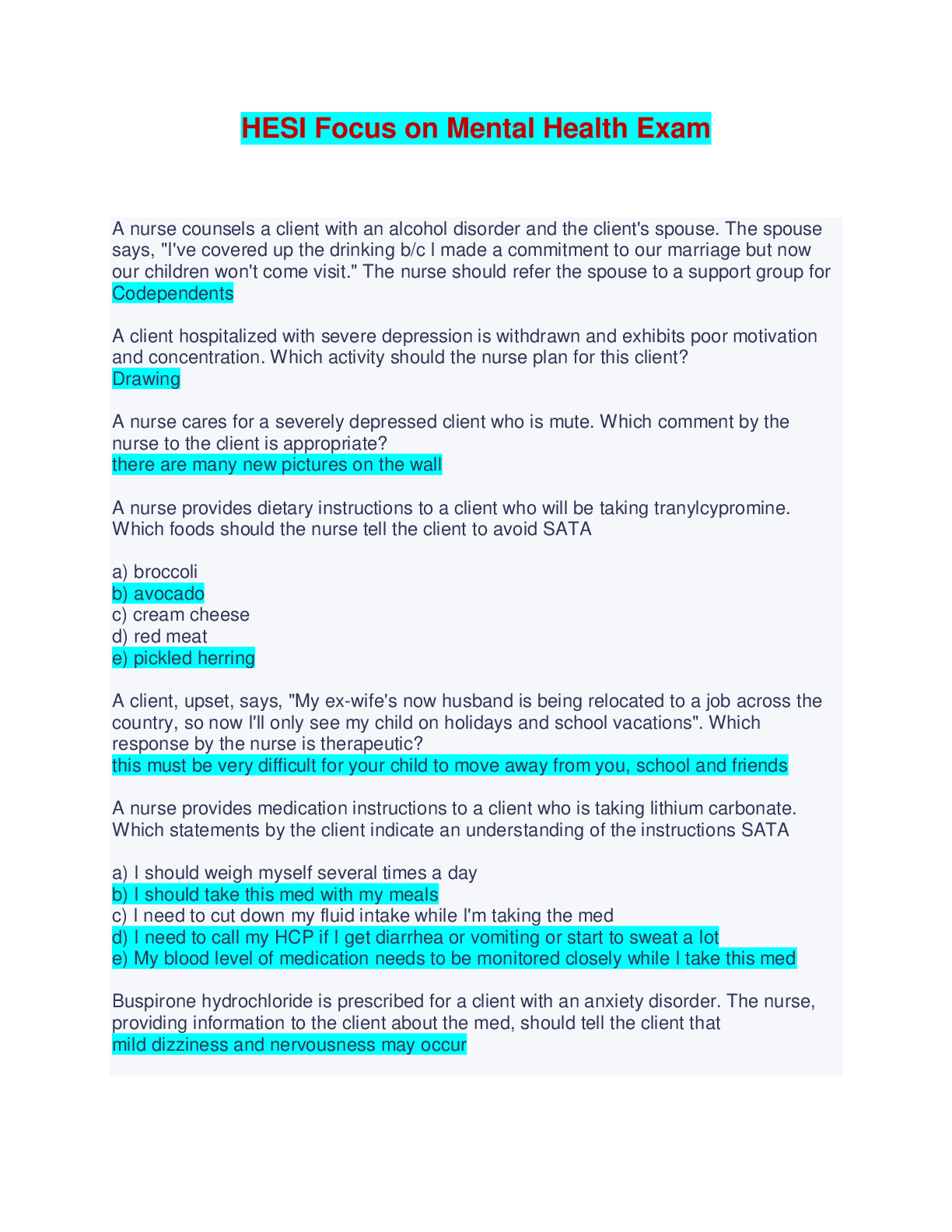
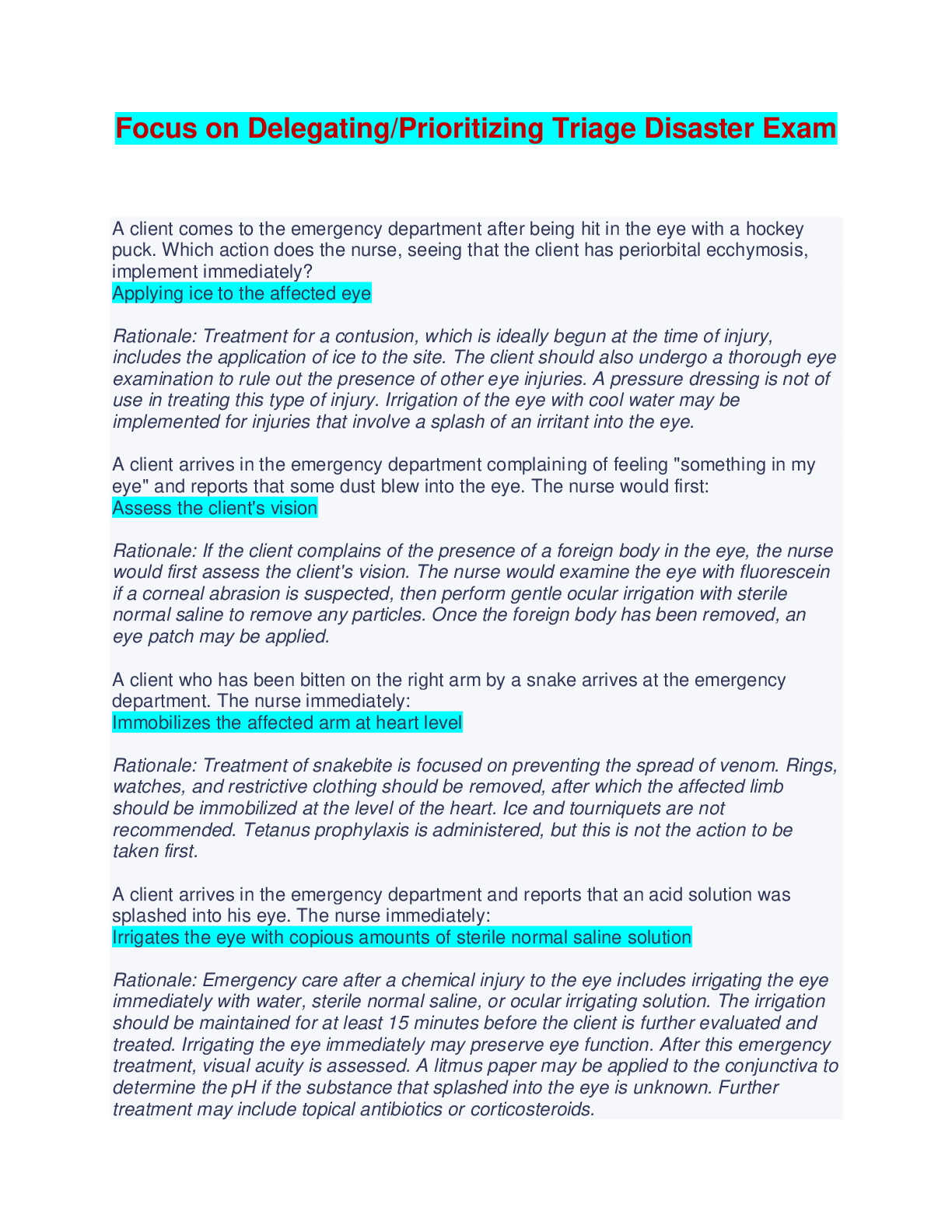
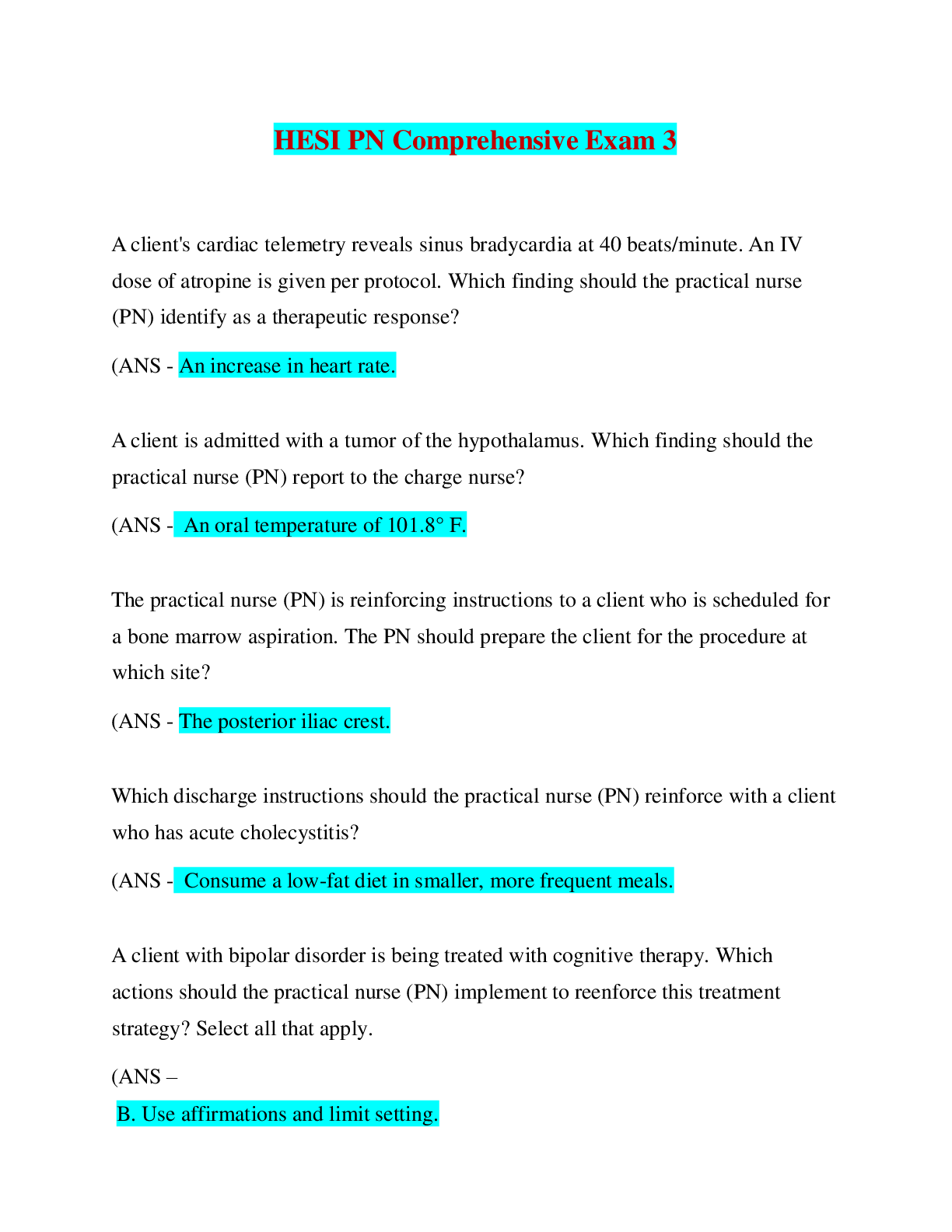
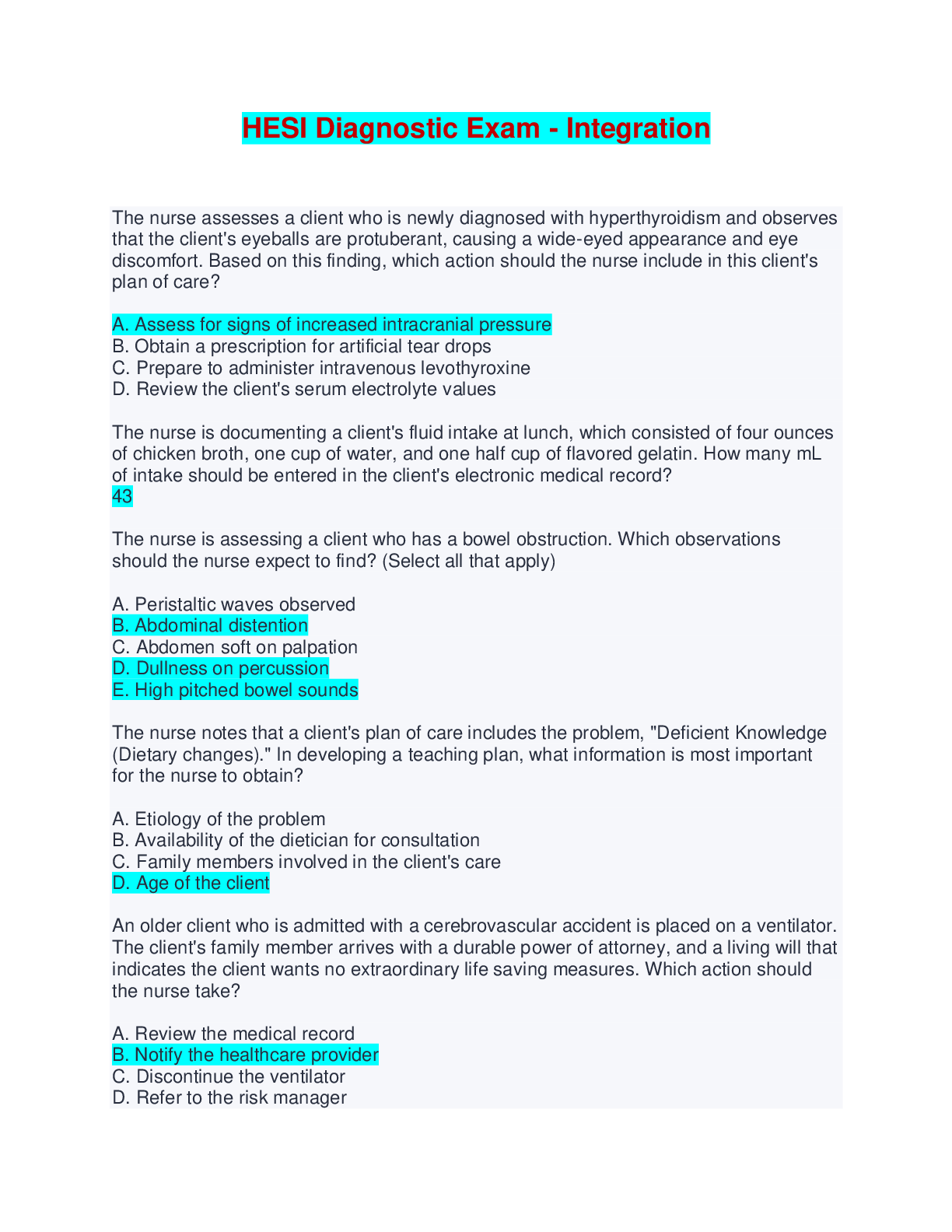
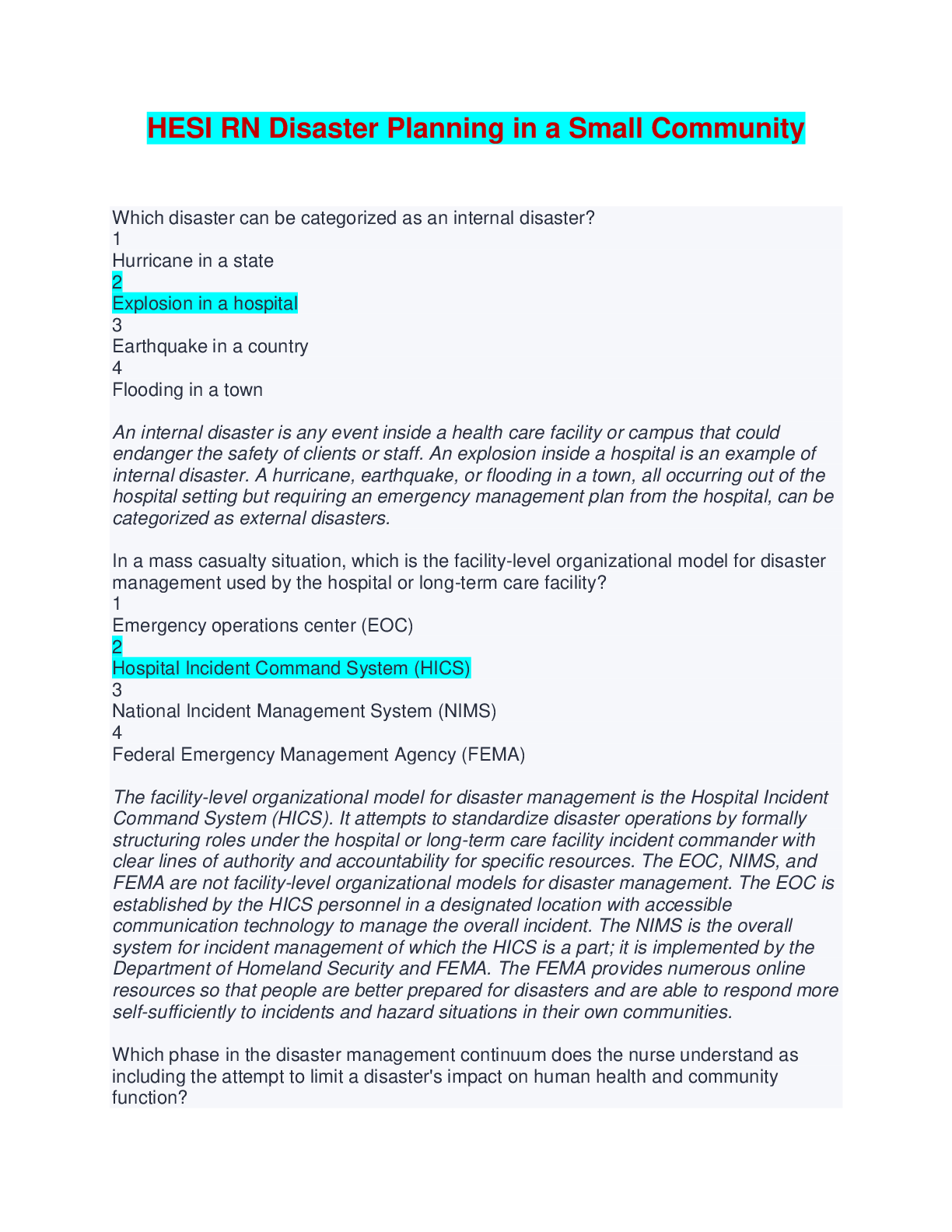
.png)
 - Copy.png)
